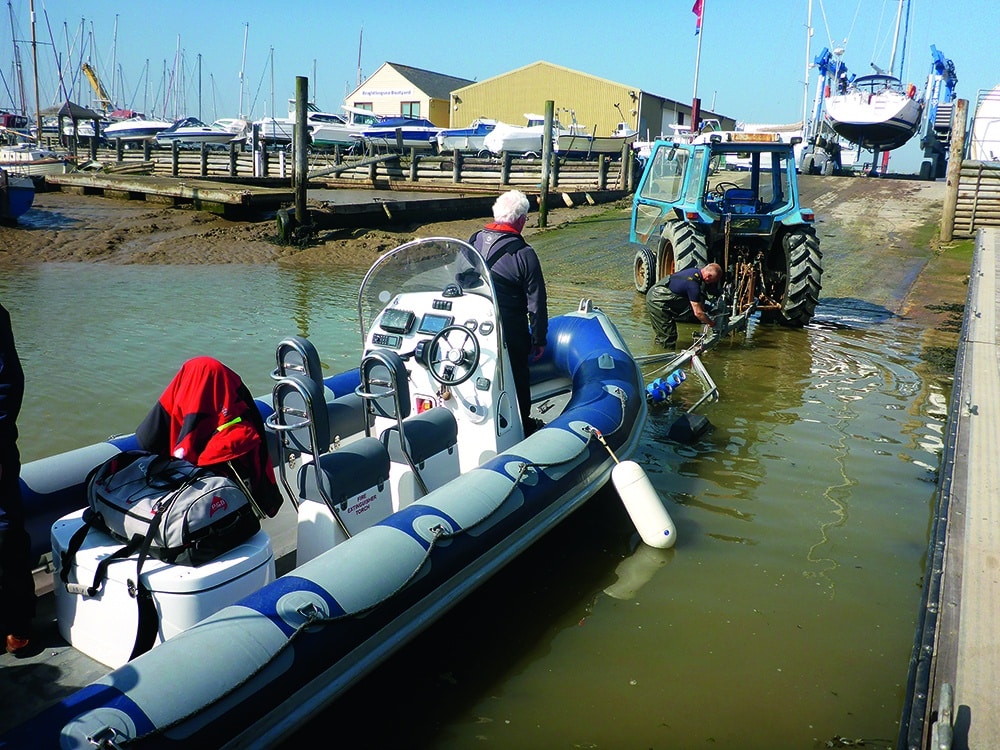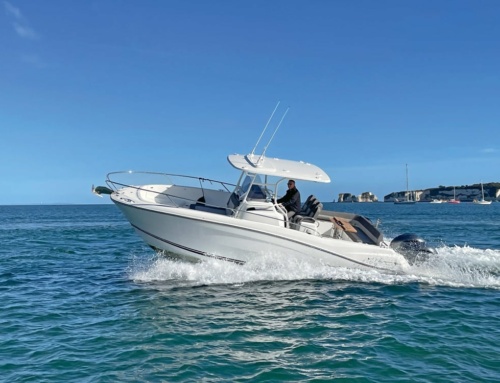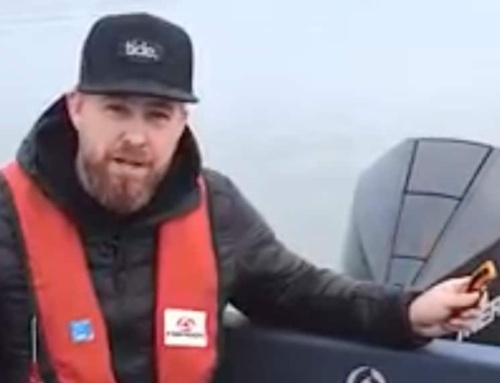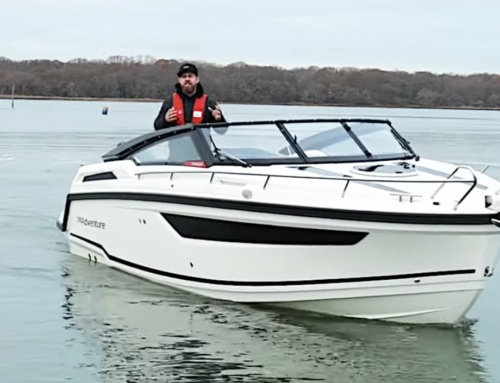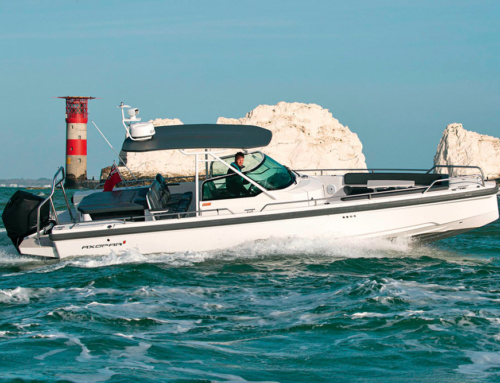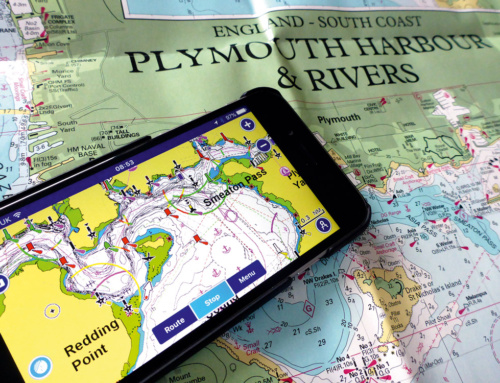Paul Glatzel ponders the issue of launch and recovery …
One of the great advantages of having a smaller boat is the chance to keep it on a trailer and take it to different locations. With trailing comes the need for launch and recovery, which can either be reasonably straightforward or a real challenge. Like anything we do afloat, the right techniques and practice make for perfect and safe launches.
Before you launch, you have to identify a suitable launch site and then get there. Websites and Facebook groups contain a wealth of useful information about launch sites, but do check independently for yourself – calling the local harbour master or marina for first-hand accurate advice makes sense. Check out the Boatlaunch website too at www.boatlaunch.co.uk. Be careful when planning your route as satnavs have a habit of choosing what they think is a really direct route without giving any thought to the fact that you may have a trailer attached.
When trailing, make sure that you set up the trailer properly: ratchet straps at the stern from the D-rings to the trailer – don’t run straps over the tubes on RIBs or you risk chafe to the tubes and the RIB moving on the trailer; winch-strap to a D-ring at the bow, with a backup line plus a ratchet strap from the trailer to the bow D-ring to arrest any forward movement of the boat on the trailer; check the lights on the tailboard, making sure it is outward of the engine, and place an orange bag over the prop(s). Grease the wheel bearings and the nipples on the tow hitch; secure the jockey wheel so that it cannot unwind downwards. As you head off, keep the windows open and the music down and listen for strange noises (e.g. damaged bearings). After a mile or so, stop and check everything over – you will probably need to tighten the ratchet straps as the boat settles on the trailer. Feel the brake hubs – if they are really hot you may have a bearing problem.
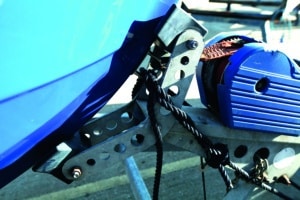 As you progress, make sure that you stop from time to time to check everything. As a precaution, carry a ‘towing kit’. This would include a bottle jack, spare wheel, tools, spare wheel nuts, and perhaps even spare bearings and the items needed to fit them.
As you progress, make sure that you stop from time to time to check everything. As a precaution, carry a ‘towing kit’. This would include a bottle jack, spare wheel, tools, spare wheel nuts, and perhaps even spare bearings and the items needed to fit them.
TOP tip
Buy a set of waders as they make launch and recovery much easier – and warmer.
At the slipway, park well clear and wander to the slipway to check it out, watch those launching and assess the slipway, its gradient and any hazards etc. You need to ask yourself three main questions: i) When can I launch? (if you are subject to tides); ii) What’s the gradient – and do I keep the trailer and vehicle attached (the preference) or separate them with a line/bar?; iii) Can I keep lines on the craft and pull it alongside a wall/jetty, or do I need to drive it straight off?
KEY SAFETY POINT
Always keep the winch strap AND a backup line attached to the boat until the stern is ready to float off.
Before launching, sort out a plan and tell your crew what the plan is. Get kids clear and out of the vehicle and boat. Keep the vehicle windows open to allow escape if there’s an issue. Reverse to the of the slipway and have a final check – lines attached, bung in, ratchet straps and tailboard removed. Reverse slowly down the slipway with lines ashore if possible. Reverse the boat into the water, so ideally the stern just floats; enter the water (if safe) and remove the winch straps and safety line. Ease the boat off the trailer and pull it alongside the slipway or start the engine and reverse clear.
TOP TIP
If you can, start the engine ashore using a hosepipe to ensure that when you launch you don’t have any issues.
If the gradient of the slipway is shallow, you may need to separate the trailer from the vehicle and join them with a line or bar. This isn’t ideal as the risks increase. As this method is usually used on slipways with shallow gradients, reverse towards the water’s edge. Stop, chock both wheels (always assume that the brakes will fail), and attach a line around a winch post and to a towball. Lower the jockey wheel, unhook the trailer and take up the slack, then remove the chocks. Reverse into the water and follow the procedure for a normal launch.
Getting the boat back on is usually just the reverse of launching, but there are a few other considerations. The tidal height when you launched is unlikely to be the same, so you may need to reconsider the method you use. Also, if you are driving onto the trailer, if the vehicle and trailer are attached, it will be a matter of lining up the bow with the trailer and then either gently driving up the trailer or getting the winch strap attached and winching on. You should try to avoid putting too much load on the winch strap, so make sure that the trailer is far enough into the water.
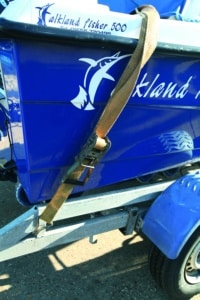 If the trailer is ‘on a line’, then driving on will just push the trailer up the slipway, so just engage the bow of the boat gently at the end of the trailer, and then you’ll need to winch it on. When pulling a boat that’s attached with a line up a slipway, as soon as it is feasible and safe, come to a stop and chock the wheels so that you can transfer the trailer back to a direct attachment to the vehicle. On steeper slipways it would be safer to wait until the slipway flattens out a bit.
If the trailer is ‘on a line’, then driving on will just push the trailer up the slipway, so just engage the bow of the boat gently at the end of the trailer, and then you’ll need to winch it on. When pulling a boat that’s attached with a line up a slipway, as soon as it is feasible and safe, come to a stop and chock the wheels so that you can transfer the trailer back to a direct attachment to the vehicle. On steeper slipways it would be safer to wait until the slipway flattens out a bit.
The combination of a heavy object on a slope can make launch and recovery a risky procedure if you are not careful, so at every stage, look for the dangers and take things slowly.
Before trailing, make sure the ratchet straps are reattached and give everything a good check, as at the end of the day it’s easy to miss something that later causes an issue.
Have fun and be safe!

